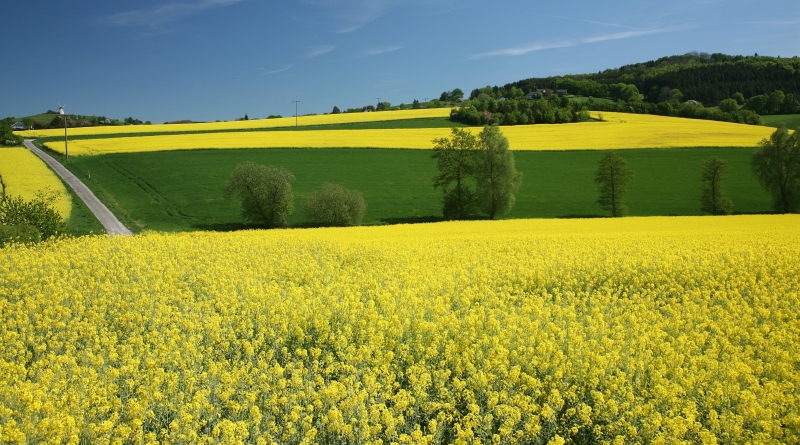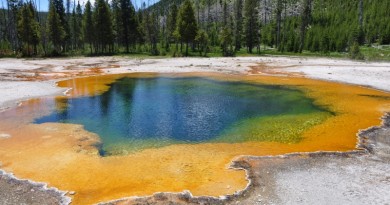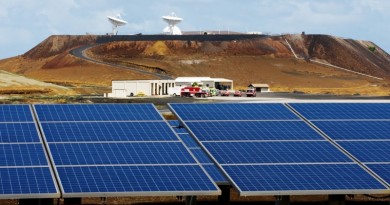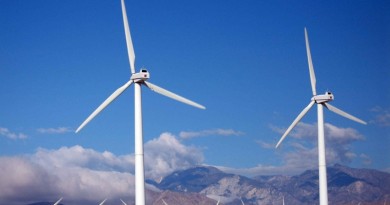Biofuels
Contents
Lately there has been lot of talk about biofuels as the replacement for traditional fossil fuels and most politicians describe biofuels as the perfect renewable energy source that can be manufactured by anyone and with it be able to decrease the dependence on foreign energy import. But benefits in import are still not enough compared to hazards related with biofuels for further development of humanity. It is pretty difficult to find some suitable biofuels definition but still this article will try to determine the basic characteristics and properties of biofuels, positive and negative sides of biofuels, and hazards that biofuels can bring to total world economy.
First thing that will mention here will be biofuels definition as the new renewable energy source, and afterwards with the help of the two main biofuels properties we’ll come to two most common types of biofuels (ethanol and biodiesel) and also to division of biofuels into two generations of biofuels. At the end of this article we’ll look on some negative aspects of this energy source founded on researches and opinions of various energy experts around the globe who believe that increased use of this energy source will separate even further the difference between developed and developing countries.
BIOMASS – WHAT BIOFUELS ARE ALL ABOUT
The term biomass is actually an abbreviation of the term biological mass and describes the quantity of recently living materials (plants, animals, along with their products) which can be found on certain part of Earth’s surface. It is the most famous from different discussions about the biomass energy, or to be more precise about the fuels that can be manufactured directly or indirectly from different biological sources. Biomass is the renewable energy source founded on carbon cycle which makes biomass different compared to other natural sources like oil, coal and nuclear fuels. Although fossil fuels (oil, coal) have their origin in ancient biomass, they are not considered biomass by the generally accepted definition because they contain carbon that has been “out” of the carbon cycle for a very long time. Biomass energy from the wood, crop leftovers and fertilizers are primary energy sources in developed regions. In some areas biomass is the biggest energy sources like this is the case in Brazil where ethanol is manufactured from sugar cane or in China’s region Sichuan where fuel is made out of fertilizers. If we look at the United States we can see that corn, high prairie grass and soy are mostly used in biofuels manufacturing while in Europe wheat, colza and sugar cane are primary energy generating products for biofuels manufacturing. Palm oil has the edge in Southeast Asia and in China sorghum and tapioca. There are lots of ongoing researches that try to improve biofuels manufacturing process but its main economic rival, namely the oil slows down these aspirations keeping it in early development stages.
BIOFUELS – DEFINITION AND DIVISION
Since we already determined the biomass as the source for biofuels manufacture the next step has to be defining bio fuels. The simplest biofuel definition could be „biofuels are liquid or gaseous fuels used for purposes of transport that are manufactured from biomass”. Biofuels can be directly produced from plant or indirectly from industrial, commercial, homemade and agricultural waste. There are three basic methods of biofuels production.

First one uses combustion of dry organic waste (industrial and agricultural waste, wood, reed, etc). Then there is the fermentation of wet waste (animal manure) without the oxygen in order to produce biofuel with 60% of methane, and also the sugar cane or corn fermentation in order to produce alcohol and esters. Finally there is also the energy gained with the help of forestry, or to be more precise with the cultivation of fast-growing trees for fuel production. But the most famous type of production is definitely the fermentation with two well known products in form of alcohols and esters. These fuels could theoretically replace the fossil fuels but for this we would require adjusting the machines so these fuels are mostly used in combination with fossil fuels.
Biofuels have potential directed towards to decrease of CO2 production. This is primarily based on the fact that plants, which are used for biofuels production, absorb CO2 during their growth which is then released during the biofuels combustion. The energy needed for plant growth and cultivation and their transformation into biofuels and afterwards the distribution needs additional release of carbon dioxide (CO2). Carbon dioxide emissions that gets released during production and distribution of biofuels can be calculated with the help of technique called “Life Cycle Analysis (LCA)” which is based on monitoring and calculating CO2 emissions in period since the time plant starts its growth, or to be more precise from the time seeds are planted into earth all the way to the release of gases in engine of the automobile. Different studies for different biofuels have been made with different results. Most of the LCA studies showed how biofuels when compared with traditional fossil fuels create significantly less greenhouse gases so their use as the replacement for fossil fuels would mean significant decrease of greenhouse effect.
There are different types of biofuels that are divided on first and second generation which depends on the source of materials used for production, production costs, price and CO2 emissions. First generation of biofuels is based on the production from the sugar, starch, different plant oils or oil fats while second generation production uses agricultural and forest waste.
FIRST GENERATION OF BIOFUELS
It has already been mentioned that the fist generation of biofuels has its origin from different animal and plant substances. Among the most known types of first generation biofuels are ethanol, biodiesel, and biogas.
ETHANOL
Ethyl alcohol or ethanol C2H5OH, is transparent, colorless liquid that has specific taste and characteristic pleasant smell. Ethanol is one of the main compounds of alcohol beverages such as beer, wine and cognac. Because of the low freezing point it is also used as the liquid in thermometers under the temperatures of -40 °C (-40 °F), and also like antifreeze in cars.
Ethanol is mostly concentrated by distillation of diluted dissolve. Ethanol that is used commercially has 95% of ethanol and 5% of water. This percentage of water can be removed with the help of certain enzyme in the process of creation of so called “absolute ethanol”. Temperature on which ethanol starts to melt is -114.1 °C (-173.4 °F), and the temperature of the boiling point is 78.5 °C (173.3 °F). The oldest method of producing ethanol is sugar fermentation. All alcohol beverages and more than half of industrial ethanol are still produced on the same way. Starch that is present in potatoes, corn and other cereals can be transformed with the help of yeast enzyme into the ethanol and carbon dioxide.
C6H12O6→ 2C2H5OH + 2CO2
This formula is really a simplified version of process in which many other products are created. Liquid that gets produces in this process that has around 7 to 12% of ethanol gets by series of distillations transformed into the 95% ethanol. Large quantities of ethanol that isn’t intended for production of alcohol drinks is produced synthetically from acetaldehydes that are gained from acetylene or from ethylene that can be extracted from oil. Ethanol can be first oxidized into acetaldehyde, and afterwards into the acetic acid. If we dehydrate it we can create ester. The other products that can be created are butadiene that is used for synthetic tires manufacture, then the ethyl chloride (local anesthetic) as well as many other organic compounds. If we mix ethanol with gasoline we can create gasohol that can be used as the car fuel. It can also be mixed with water and many other organic compounds in almost all ratios. Ethanol is also excellent dissolvent for many different substances and is also used for perfumes production, nail polish production, celluloid and even explosives. Alcoholic dissolve of not evaporating substances are called tinctures. When it vaporizes the dissolve is called spirit (denaturized alcohol).
Most of industrial alcohol is denaturized in order to avoid its use as just the alcohol. This process includes mixing ethanol with poisonous substances that make ethanol impossible to drink and removal of these substances would cost serious of different treatments that would in the end cost lot more than taxes on alcohol beverages.
BIODIESEL

Biodiesel is the first biofuel that became known to wider audience and is the mostly used biofuel in Europe. It is manufactured from oil or fats with the process of transesterification and its chemical structure is very similar to mineral diesel. Oils are mixed with sodium hydroxide and methanol or ethanol creating two products, biodiesel and glycerol. One part of glycerol comes on every ten parts of ethanol. Biodiesel can be used in every diesel engine when mixed with mineral diesel. In some countries manufacturers give warranty on engine that it can use pure biodiesel without mixing it, for instance Volkswagen advices its buyers to get the advice from Volkswagen’s department for protection of the environment before using biodiesel.
BIOGAS
| Substance | % |
|---|---|
Methane, CH4 | 50 – 75 |
Carbon dioxide, CO2 | 25 - 50 |
Nitrogen, N2 | 0 - 10 |
Hydrogen, H2 | 0 - 1 |
Hydrogen sulfite, H2S | 0 - 3 |
Oxygen, O2 | 0 - 1 |
Biogas is the result of anaerobic transformation of organic materials (biocomposable waste, energy substances) with the help of anaerobic organisms, and when produced it contains methane and carbon dioxide. Biogas can be used as the source of electricity and to heat buildings and water. As the fuel its primary use is in engine with internal combustion. Typical chemical structure of biogas is presented in the table above.
SECOND GENERATION OF BIOFUELS
Second generation of biofuels gets produced from refinement of agricultural and forestry waste. Unlike the first generation biofuels of this generation could significantly reduce CO2 emissions, and with it they do not use food as the base for production process, and some types even enable better work of the engine. Biofuels of the second generation that are currently used are biohydrogen, bio – DME, biomethanol, DMF, HTU diesel, Fischer – Tropsch diesel and different mixtures of alcohols.
BIOHYDROGEN
This type of biofuels could be most spread in years to come since it is renewable, it doesn’t result in greenhouse gas emissions during the combustion but it releases the energy and can be easily transformed into the electricity with the help of fuel cells. The simple solar reactor is needed during the biohydrogen production in form of see-through closed box and weak energy source. Electrochemical production of biohydrogen with the help of solar battery however requires strong energy sources. There are different processes of biohydrogen production. Some of these are: Biophotolysis of the water with the help of micro algae or cyanobacteries, production of biohydrogen with the help of certain enzymes (hydrogenase, nitrogenase), production through photosynthetic bacteria, and combination of photosynthetic and anaerobic bacteria during the production. The production itself is the most demanding with the emphasis on environment. The future of this process does not depend only on benefits through new researches but also on economic demands, social adjustability and the total development of hydrogen energy system. .
BIO – DME
Bio – DME or bio dimethylether is very similar to biomethanol about whom we’ll soon talk much more. It can be produced directly from synthetic gas that is still in development phase. In chemical industry however DME is produced from the pure methanol in the process of catalytic dehydration which chemically separates water from methanol. This type of methanol can be produced from coal, natural gas, or even biomass. Very often methanol and DME are produced together in the same process. Only recently energy experts started looking DME as the possible fuel source while in the past DME was used as the replacement for chlorofluorocarbon in different sprays. But its low combustion temperature and high octane number makes it ideal as the fuel in diesel engines. Although it doesn’t encourage the metal corrosion (like bioethanol and biomethanol) DME does affect the certain types of plastics and rubbers after certain period of time. At room temperature it is in gaseous state while it goes in liquid state if the pressure is above 5 bars or at temperatures lower than -25 °C.
BIOMETHANOL
This type of second generation biofuels can also be produced from synthetic gas that is obtained from biomass. It can be used as the replacement for oil in engine starting because of the high octane number. Just like when using bioethanol we should also take into consideration low evaporation pressure, low energy of density and incompatibility with materials in engine. 10 – 20% of biomethanol mixed with oil can be used in engines without any need for modification. Since biomethanol burns with invisibly and is highly poisonous, strict safety measures are necessary.
DMF
DMF or Dimethylformamide is organic compound with chemical formula (CH3)2NC(O)H. This colorless liquid can be mixed with water and most of other organic compounds. It is also often used as the dissolvent in chemical reactions. It is produced by the diethyl amin and carbon monoxide reaction on both low pressure and the temperature. It is not just used as the fuel, but also in pharmacy, pesticide production, production of synthetic fibers and similar It is also believed how DMF can cause cancer and some birth flaws.
HTU DIESEL
HydroThermalUpgrading (HTU) is technology which transforms wet biomass of animal origin into biofuels. On temperatures from 300 – 350 °C followed by high pressure biomass is transformed into the organic compound that contains the mix of carbohydrates. After the process of Catalytic hydrodeoxygenation (HDO) the liquid fuel similar to fossil fuels can be produced. For now this technology is only used in Holland where there is test HTU base.
FISCHER – TROPSCH DIESEL
Fischer – Tropsch process is catalytic chemical reaction during which carbon monoxide and hydrogen get transformed into liquid hydrocarbon of different shapes. Typical catalysts used here are iron and cobalt. The formula is: (2n+1)H2 + nCO → CnH(2n+2) + nH2O. The basic purpose of this procedure is to produce synthetic replacements of oil or natural gas or in order to use it as the synthetic oil for lubrication or synthetic fuel.
MIXTURES OF ALCOHOL
Synthetic gas, mix of carbon monoxide and hydrogen can be produced from biomass through the series of thermal processes, like for instance evaporation. Catalytic reactions these mixes can be turn into fuels, like ethanol and high value chemicals like propanol. Current catalysts for the synthesis of «mixed alcohols» are produced for synthetic gas which was acquired from coal or methane steam. However these are not the best solutions so there are already attempts to produce the improved catalysts that would made the production of biofuels far more efficient.
BIOFUELS INFLUENCE

Many people see biofuels in positive note like the fossil fuels replacements because that are more ecologically friendly than the fossil fuels, and as something that will significantly reduce negative impact that fossil fuels have created on our environment. But things are not as pretty as many people would want they are and we really have to ask ourselves whether fossil fuels are really the best solution to satisfy world energy demand.
Basically, biofuels production is really a direct transformation of food into the energy, which means that some food prices could skyrocket and with it directly increase already big hunger in many parts of the world because bigger price of the food means less food to developing countries of the third world. Jean Ziegler U.N. special reporter from “Right to food” program said in 2007 how biofuels production will even further increase hunger in world by claiming that biofuel production has already increased price of some food to record levels. Ziegler doesn’t dispute the right of the countries to produce biofuels but nearly suggests that “the effect of transforming hundreds and hundreds of thousands of tones of maize, of wheat, of beans, of palm oil, into agricultural fuel is absolutely catastrophic for the hungry people Also he added that “wheat price doubled in one year and the price of corn quadrupled, leaving poor countries, especially in Africa, unable to pay for the imported food needed to feed their people”. At the end he concluded that the production of biofuels is actually the crime against humanity. Biofuels production influence is arguably the most notable in United States where agriculture is more and more oriented to corn production that is later transformed into the ethanol, and increased production of corn carries also decreased production of other foods, and therefore increased prices of these foods. With the decrease in other cereal production there is also a big competition between the ethanol manufacturers and meat producers that both need corn which increases the price of the corn. Corn production is increasing each year and if continues it will soon significantly increase the price of meat.
Biofuels are currently mostly produced from sugar cane, corn, soybean, and oil rape, and in the same time there are about 850 million hungry people that do not have enough food. If you take a closer look to the current trend of transforming food into the fuel you can much easily understand the Ziegler’s statement when he said that «every child who dies in today’s world is actually murdered» (2006)
CONCLUSION
Based on everything that has been said so far we can conclude how biofuels are not exactly a perfect solution that we should be using straight away to satisfy our energy demand. Negative sides also have to be looked at. Of course when we compare them with fossil fuels biofuels do look almost perfect, especially since fossil fuels are not renewable sources of energy nor are they ecologically acceptable. But is everything really so ideal?
From the opinions of different energy experts and many researches it is quite easy to conclude how despite all the advantages of biofuels they still can not be taken for granted because we first need to look the other side and do some other things like for instance make the biofuel production far more efficient and do everything in our power to remove the negative side effects. But is this possible? Scientists have been fighting for decades to at least in some measure decrease the harmful influence that fossil fuels have so it is a real question how will they confront with this new type of fuel that is still in early development phase and that still needs determination of all consequences of its use.
World economy and especially poor countries need to find some sort of solution that wouldn’t result in even bigger poverty and hunger. Because biofuel production that uses food as its source can bring exactly that – poverty and hunger, and this type of biofuel production is sadly the widest spread. Ever increasing food prices will have devastating effect on population in poor countries and Jean Ziegler’s statement about the every child that dies from the hunger will get much more meaning if current biofuel production is about to continue in the same trend.



